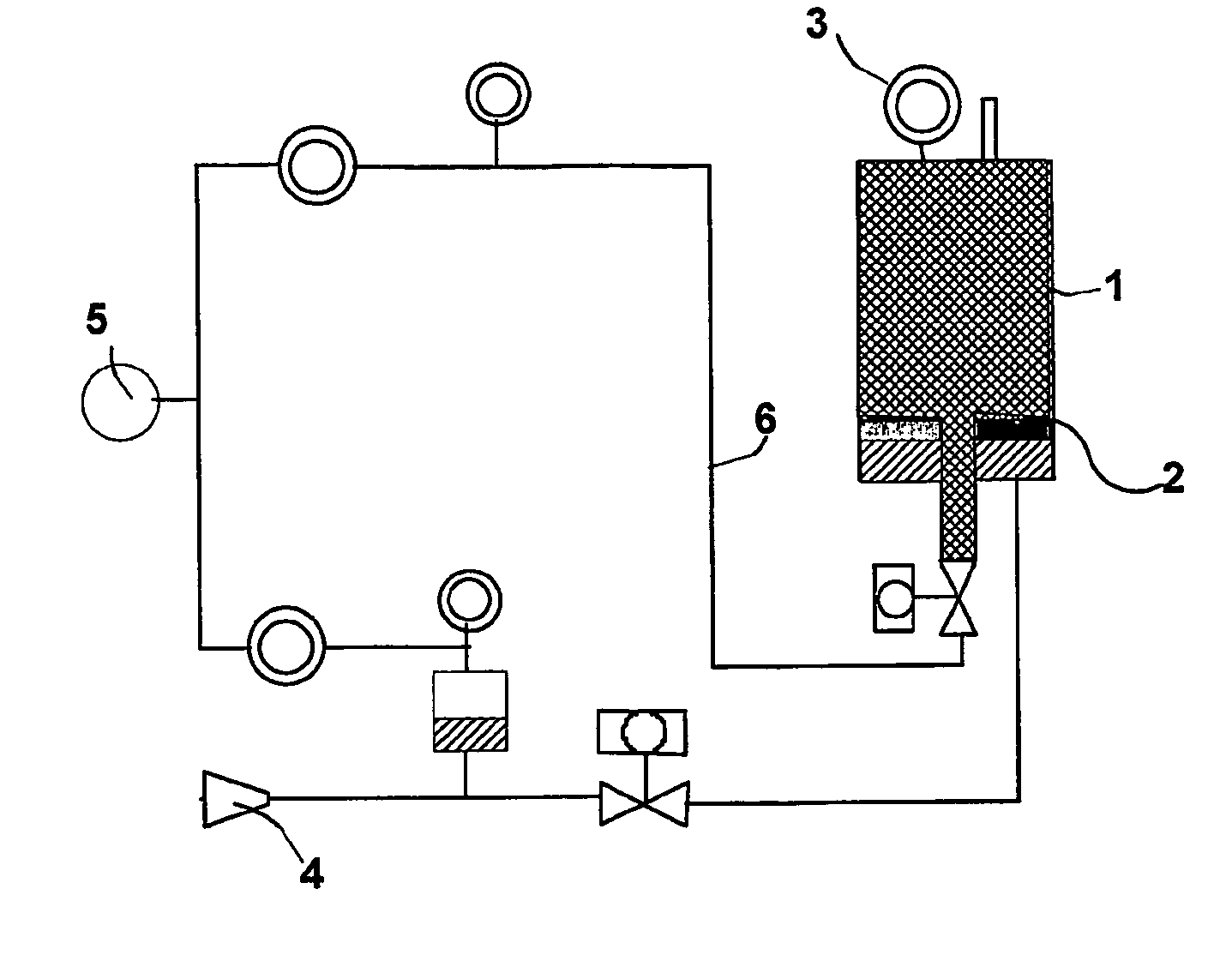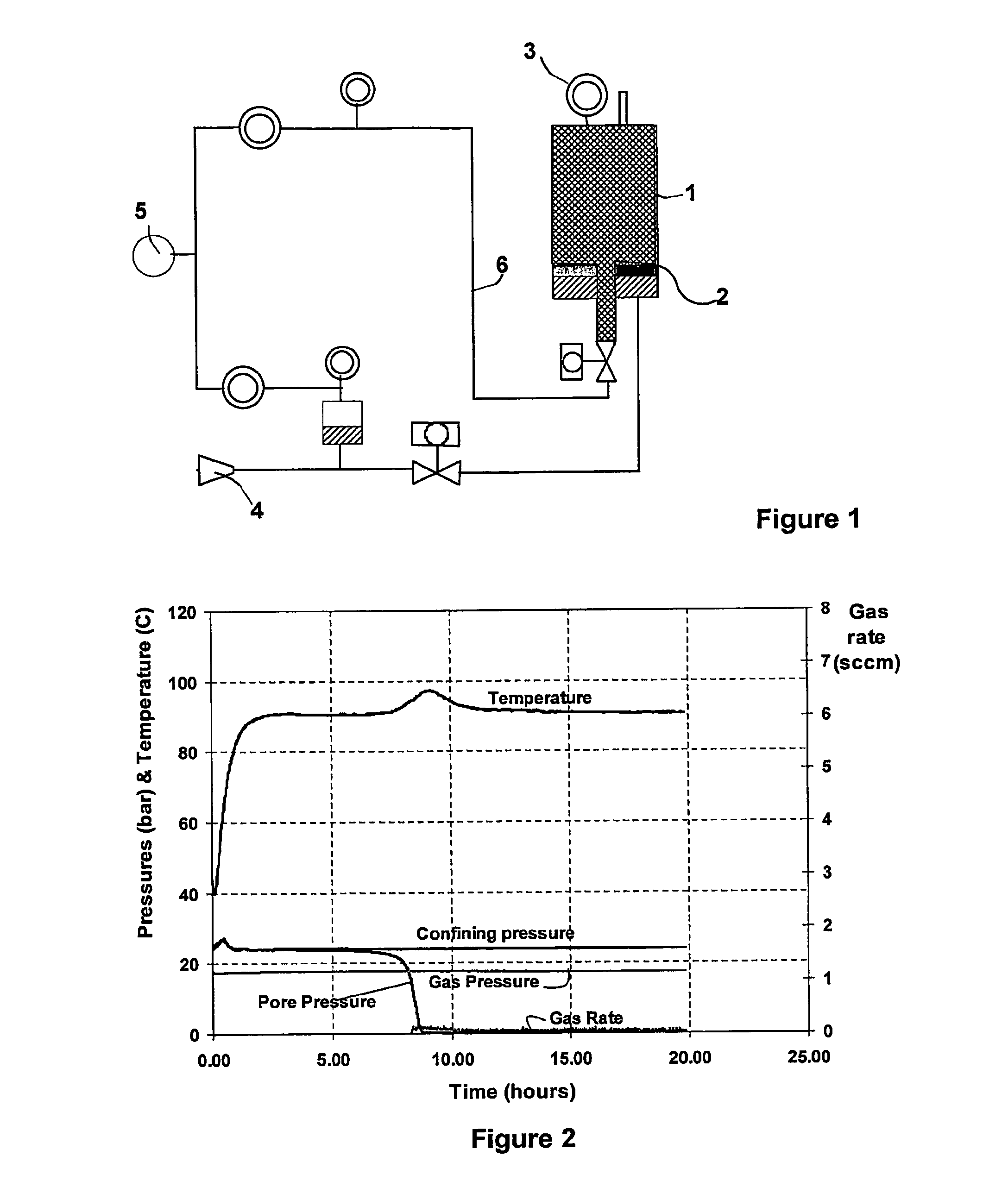Fluid loss control agents and compositions for cementing oil and gas wells comprising said fluid loss control agent
a technology of fluid loss control agent and composition, which is applied in the field of petroleum service and supply industries, can solve the problems of unsuitable polymers having a molecular weight higher than about 4,000,000, and achieve excellent fluid loss control and reduce the amount of latex
- Summary
- Abstract
- Description
- Claims
- Application Information
AI Technical Summary
Benefits of technology
Problems solved by technology
Method used
Image
Examples
example 1
[0055]These tests were carried out with retarder C. All slurries were prepared with Black Label Dyckerhoff Class G cement, mixed at 1.89 g / cm3 (15.8 ppg) density with freshwater.
[0056]Table 2 depicts the rheology and fluid loss performance, of 3 cement slurries. The fluid-loss control is considered as good when the API fluid-loss value is below 100 mL / 30 min, and considered as excellent when the value is less than 50 mL / 30 min. Slurries #1 and #2, according to the prior art contain only one fluid loss control agent, either a water-soluble polymer (test #1) or a styrene-butadiene latex suspension (test #2). Slurry #3, according to the present invention, on the other hand contains as fluid loss control agent (FLAC), a mixture of 80% (by volume) of the same styrene-butadiene latex as in test #2 and 20% (by volume) of the same water-soluble polymer as in test #1.
[0057]Results essentially similar to the results obtained in test #2 were obtained in test #3 although the latex concentration...
example 2
[0062]Data gathered in table 3 show the effect of the volume ratio of water-soluble polymer to latex suspension. To be noted that the measure of free fluid cannot be made at a temperature greater than 85° C. (185° F.), so whenever the BHCT is greater than 85° C., the test was actually carried out at this temperature and not the BHCT. All slurries were prepared with Black Label Dyckerhoff Class G cement, mixed at 1.89 g / cm3 (15.8 ppg) density with freshwater.
[0063]
TABLE 3Test#4#5#6#7BHCT (° C.)6666121121Silica Flour (% BWOC)——3535Antifoam Agent (L / tonne*)2.662.661.971.97Dispersant (L / tonne*)4.664.662.632.63Retarder A (L / tonne*)0.890.89——Retarder B (L / tonne*)——6.586.58Water Soluble Polymer (L / tonne*)17.7513.3215.7811.84Styrene-Butadiene Latex (L / tonne*)71.0275.4563.1367.04Latex suspension / Polymer solution80 / 2085 / 1580 / 2085 / 15volume ratioFree fluid at 66° C. (or 85° C.)0Traces0TracesAPI Fluid Loss at BHCT42505465*tonne of blend (cement in tests #4 and #5 and cement + silica flour in tes...
example 3
[0064]Data gathered in table 4 show the effect of the type of chosen retarder in the formulation. The slurries were prepared with fresh water, with class G Black Label Dyckerhoff cement at 1.89 g / cm3 (15.8 ppg) density. Except in tests #22 and #23, the fluid loss control agent (noted FLAC) is a mixture of 80% (by volume) of the same styrene-butadiene latex as in test #2 and 20% (by volume) of the same water-soluble polymer as in test #1.
[0065]Temperatures range from 49° C. to 177° C., determining the choice of retarder. Also when found suitable, an antisettling agent was added. To be noted that tests #22 and #23, performed at temperatures higher than 150° C. were carried out with a styrene-butadiene latex grade adapted to higher temperatures.
[0066]
TABLE 4Test#8#9#10#11#12#13BHCT (° C.)496666858585Antifoam Agent (L / tonne*)2.662.662.662.662.662.66Dispersant (L / tonne*)3.554.444.444.444.444.44Dispersant Aid (L / tonne*)———3.55——Retarder A (L / tonne*)0.890.89—2.66——Retarder C (L / tonne*)——1....
PUM
| Property | Measurement | Unit |
|---|---|---|
| wt % | aaaaa | aaaaa |
| wt % | aaaaa | aaaaa |
| wt % | aaaaa | aaaaa |
Abstract
Description
Claims
Application Information
 Login to View More
Login to View More - R&D
- Intellectual Property
- Life Sciences
- Materials
- Tech Scout
- Unparalleled Data Quality
- Higher Quality Content
- 60% Fewer Hallucinations
Browse by: Latest US Patents, China's latest patents, Technical Efficacy Thesaurus, Application Domain, Technology Topic, Popular Technical Reports.
© 2025 PatSnap. All rights reserved.Legal|Privacy policy|Modern Slavery Act Transparency Statement|Sitemap|About US| Contact US: help@patsnap.com



